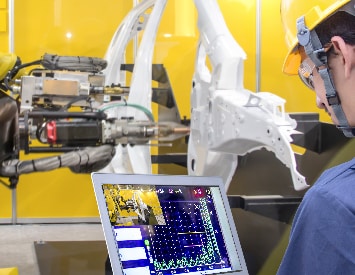Dear colleagues
First of all – best wishes for a great 2011 and thanks for reading this. The signs are that this is going to be an excellent year for engineering professionals – no matter where you are in the world, the demand for your services is rapidly increasing. As we have the northern hemisphere in the grip of a ferocious winter, a few thoughts on the technology and engineering of skiing and snowboarding and how it reflects on your engineering work.
On the overall physics, there is little to distinguish skiing and snowboarding. Both rely on converting potential energy (= mgh) to kinetic energy (= m v squared / 2) when swooping down the hill. The principle of movement is based on ice being slippery because pressure melts the ice leaving a thin water layer – no heat is required, nor is there any necessary friction – the reason why extremely cold ice is less slippery (thanks Will Stewart for clarifying this). This forms a thin layer of water which lubricates the bottom of the surface of the snowboard or ski thus allowing those incredible speeds.
However, while the physics is the same, the bio-mechanics of both sports differs dramatically. The skier keeps her centre of mass neatly between the two skis, thus avoiding falls when turning. Whereas the snowboarder, has to be vigilant to avoid his mass centre moving beyond the board’s edge (esp. when changing direction). This can end in some horrible falls. Greater speeds are achieved by skiers as they divide their weight across two surfaces (against that of snowboards with the entire body weight on one surface). This generates spectacular speeds of 250km/h for skiers against that of snowboarding at 200km/h (naturally, you would be one of the top performers to achieve these numbers).
Perhaps one safety advantage of snowboarders is tumbling at a high velocity when things go awry. When a tumble does occur, for the snowboarder, as his frame is intact on a single surface (both legs and body locked together tightly on the board), there is not the same chaotic frenzy as for a skier with all four limbs going independently in different directions.
So what does this mean to us as engineering designers ?
Well, as Laura Moncur remarks: We make our gadgets our own by the way that we use them, with or without the permission of the manufacturer.
So while you need to ensure your engineering design is best practice, you need to consider all the possible ways your user is going to misuse it. Sometimes this can be extraordinarily hard to visualise. As Douglas Adams wryly observed (this is my favourite quote btw): A common mistake that people make when trying to design something completely foolproof is to underestimate the ingenuity of complete fools.
Thanks to the Economist (and the readers) for some interesting thoughts on these two great sports.
Yours in engineering learning
Steve


